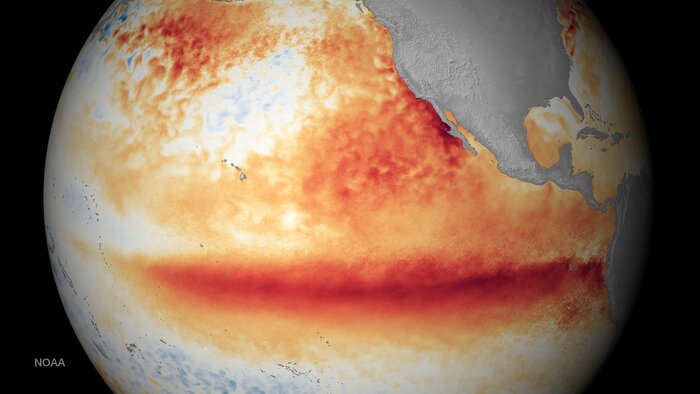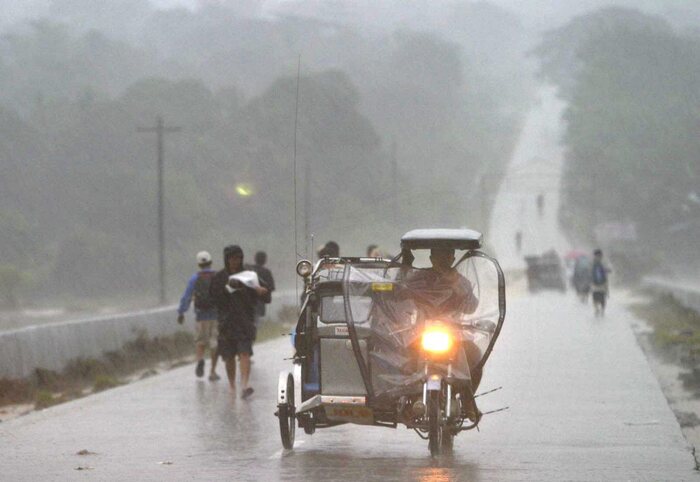Experts fear that the El Niño weather phenomenon could further increase temperatures
Created: 06/01/2023 09:20
By: Marc Dimitriu
A dried-up corn field near Windesheim: it could be even hotter in 2023 than in 2022. © IMAGO/RAINER UNKEL
The weather is going crazy: it's getting warmer every year and now even January feels like spring.
A weather phenomenon could intensify this in 2023.
Geneva - 2022 was one of the warmest years since measurements began in 1850. And January 2023 also got off to an unusually warm start, with some spring-like temperatures.
Despite the cooling weather phenomenon La Niña: 2022 one of the warmest years since measurements began
Despite a severe cold phase at the beginning of the month, even December 2022 was still too warm at the end, as qualified meteorologist Dominik Jung, managing director of the weather service Q.met, explained to the weather portal
wetter.net
.
The US weather service NOAA had even announced that the winter of 2022/23 could be record warm and also end up in the top 5 of the warmest winters since 1881.
The high temperatures in 2022 are also worrying because it coincided with the cooling effect of the La Niña weather phenomenon.
There are now increasing signs that the three-year La Niña phase, which was unusually long, is now coming to an end.
The counterpart El Niño could soon follow, which can drive temperatures even higher.
El Nino in 2023?
Weather phenomenon could drive up temperatures further
In early January, NOAA expected La Niña to transition to a neutral phase between January and March.
"Exceptionally warm deep waters in the tropical western Pacific point to the next El Niño event in 2023," climate expert Kevin Trenberth from the University of Auckland wrote in September.
This could lead to global temperature records in 2024 because some of the ocean heat is released into the atmosphere.
In November, the World Weather Organization (WMO) in Geneva estimated the probability at 25 percent that an El Niño phase would begin in the summer.
The probability that the previous record of the hottest year by 2026 will be exceeded is 93 percent.
The record year was 2016, with a global average temperature of 1.3 degrees above the 1850-1900 level.
What are La Niña and El Niño?
The correct name is "El Niño Southern Oscillation" or "Enso" for short.
It describes a coupled circulation system of ocean and atmosphere in the tropical Pacific.
During the El Niño warm phase, the current brings sea heat to higher latitudes, some of which is released into the atmosphere through evaporation.
La Niña is thought to be a cold phase, when currents carry solar heating to deep waters of the western Pacific, where it is stored.
Because fishermen in Peru noticed the warming at the end of the year, they called the phenomenon El Niño (the Christ Child).
Between the two extremes one speaks of a neutral phase.
El Niño: "Global temperatures" are rising - weather experts warn
According to the WMO, strong and moderate El Niño events contribute to warming and increase the average global surface temperature.
"Although the strongest effects of El Niño are felt in the equatorial Pacific, they can affect weather around the world by affecting high and low pressure systems, winds and precipitation," explain Columbia University climate researchers.
"As warmer ocean water releases excess energy (heat) into the atmosphere, global temperatures are rising."
also read
Two ATMs blown up in mall
READ
Apartment fire in an apartment building: Several residents saved
READ
Neubrandenburg expects much higher energy costs
READ
A storm will move across Germany's north on Friday
READ
Little wintry in the country: stormy on the Brocken
READ
Fancy a voyage of discovery?
My space
WMO chief Petteri Taalas warned in August 2022: “To have La Niña events for three consecutive years is very extraordinary.
The cooling effect has temporarily slowed the rise in global temperatures, but that will not halt or reverse the long-term warming trend.”
According to a preliminary forecast, 2022 was one of the warmest years since the beginning of industrialization, despite La Niña.
The WMO estimated the global average temperature in November to be about 1.15 degrees above the average for the years 1850 to 1900. In addition, the years 2015 to 2022 were the eight warmest years.
(md with dpa)













